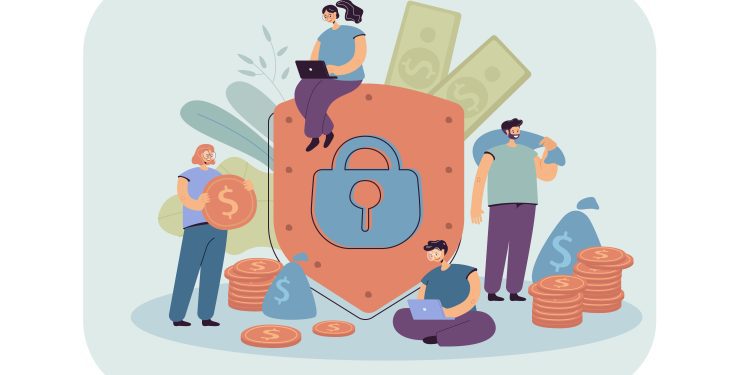As the pandemic continues to maintain its grip around the world, forcing people in and out of lockdowns, eCommerce, mobile banking, and mobile usage have surged. Cybercriminals and fraudsters have seized the moment, taking advantage of this vulnerable time for individuals and businesses by accelerating their fraud activity.
Trends and practices that have evolved during the pandemic such as increased remote working are likely to be permanent changes. And even as countries start to reduce COVID-related restrictions, there will continue to be a greater reliance on mobile commerce and payments than in the past – with the opportunity for online fraud only to grow.
According to Transunion’s latest quarterly analysis of global online fraud trends, fraud against businesses has increased 46% since the onset of the pandemic. Furthermore, their latest Global Consumer Pulse Study found that more than one in three global consumers have recently been a target of digital fraud.
The focus for fraud prevention professionals is not just on reducing losses but also minimizing false positives — as the negative customer experiences driven by these events can add up. For reference, in a recent study conducted by PwC, American consumers said the total shopping experience influences 75% of their decision to complete a purchase.
As the world adapts to a ‘New Normal’ where people’s lives are increasingly conducted online, how can financial institutions protect themselves and their customers from fraud with behavioral biometrics? Following are three ways to tackle this growing hurdle.
1. Out with the old, in with the new
It’s clear that the old ways are no longer working. Passwords and any other conventional ways of authentication are no longer sufficient to prevent fraud. Cybercriminals are becoming increasingly innovative in their ability to steal personal data like emails, usernames, birthday, logins, etc. Two-factor authentication isn’t our savior, either. Even strong customer authentication can be sidestepped by enterprising criminals. And by the time organizations plug one hole in their system, fraudsters have likely already moved on to the next vulnerability. Companies have no choice, then, but to get proactive.
Behavioral biometrics have a vital part to play in this transformation. Behavioral biometrics identify the unique digital behaviors of individuals – and make use of these behaviors to detect when traditional patterns change. For example, keystroke movements, mouse use, touchscreen behavior, and device movements offer key behavioral biometric verification elements that are very difficult to fake. Digital fingerprints, if you will, which like traditional biometrics focused on physical characteristics, such as retinal patterns and facial scans, offer clues to the would-be fraudster’s identity.
2. Using behavioral biometrics to detect the most complex online fraud
The key to detecting future online fraud involves an understanding of prior behavioral biometrics use cases. Case studies suggest that the use of behavioral biometrics have been key in spotting and preventing fraud much earlier in the process, helping to prevent even hard-to-detect types of fraud like account takeover and new account fraud. Examples such as password replacement in banking and behavioral profiling both serve as good foundations, offering more insight into detection and mitigation for the future.
Financial institutions are increasingly adopting software solutions that monitor the ways in which customers type and swipe on their devices or even how they hold their device when logged into banking apps. If the usual behavior of the customers changes, then the software flags an alert to investigators and can even block the potential suspicious activity with fewer false positives than traditional detection methods.
3. Real-time Fraud Detection with behavioral biometrics
When it comes to financial fraud prevention, not all data is being generated or used equally. Existing solutions available today for financial institutions don’t always fully analyze behavioral data to protect themselves and their customers from fraud before it occurs because they don’t always include the real-time data required to do so. In today’s digital ecosystem, where cybercriminals have increased their level of sophistication when carrying out fraud attacks, tracking and preventing this activity has grown more complex. To mitigate these attacks and risks, enterprise technology and security solutions must keep pace to ensure that they are protecting customers and continuing to deliver the exceptional customer service expected of them, and that’s why real-time data is critical.
Solutions that are providing real-time behavioral biometric data coupled with additional data including device, geographical and behavioral analytics are poised to truly help financial institutions and their customers anticipate suspicious “moves” or behaviors being made within their customers’ accounts — helping to detect, prevent and mitigate fraudulent activity before it happens.
Because some traditional authentication methodologies for payments can be easily replicated or even bypassed altogether, behavioral biometrics provide an additional layer of security. They not only enable fraud to be detected and prevented in real-time, but more critically, are very difficult to circumvent. Biometric authentication is a highly reliable method that creates an almost frictionless approach, delivering continuous authentication allowing financial institutions to identify fraud and fraudsters before the fraud occurs. The speed to these insights is critical in fraud detection.
With global payment transactions expected to exceed $6.6 trillion in 2021, a 40% jump in two years, now more than ever is the time for businesses to embrace behavioral biometrics to prevent financial fraud.










